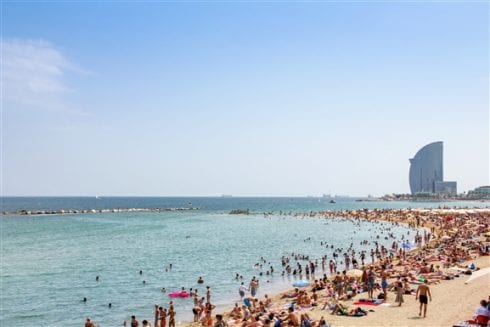By Eloise Horsfield
WIDER-RANGING protection of the Iberian lynx has been called for as the species is found to have roamed beyond Andalucia.
The critically endangered feline is commonly thought to be confined to Andalucia, where there are 300 closely-monitored individuals in the wild and 96 at breeding centres.
But new information has shown the cat has spread to Castilla-La Mancha, Castilla y Leon, Extremadura and even as far away as Madrid.
While it is good news for the species as a whole, without proper monitoring systems in place there is nothing to ensure cats living beyond Andalucia are safe.
Possible protective measures include controlling the use of herbicides, stopping rabbit hunting and making sure new infrastructure does not harm the lynxes’ habitat.
“Current wood-clearing practices would have to stop too,” says natural history expert Ramon Grande del Brio, whose research found four or five lynx populations in Salamanca.
“The machines they use destroy everything.”
In April this year, a female lynx was spotted 150 km away in Ciudad Real, over the border in Castilla-La Mancha after coming near a log soaked in lynx urine, which is a technique specialists use to attract the animal.
It was Fontana, a three-year-old born in Andujar-Cardena mountain range in 2009 who had not been photographed since 2010.
A study by natural history scholar Luis Garzon has also detected lynxes in Extremadura and Castilla y Leon, where it is estimated there are up to 50 individuals.
Garzon has interviewed farmers and shepherds in these areas, collected faeces, identified lynx tracks and heard the animals during their breeding season between December and February.
In 2006 excrement was found in Madrid which later turned out to definitely belong to a lynx.
Worryingly though, there is currently zero monitoring system in place in the Spanish capital because there is no proof that lynxes are living in the area –despite experts insisting tracks have been spotted in the Madrid sierra.
And while as recently as last year faeces samples located in Madrid were found to be negative, researchers underlined the fact they ‘deteriorate very quickly’ and are sometimes in a bad state, which ‘makes analysis difficult’.









“Worryingly though, there is currently zero monitoring system in place in the Spanish capital because there is no proof that lynxes are living in the area”
Hmm, that is a total contradiction. To have no proof of something requires investigation and research to come to that conclusion. That sounds so like a Spanish way of doing things. lol.
Wild lynx spotted in hills of bouliquime portugal hhhheeeelllllpppppp!!!!!